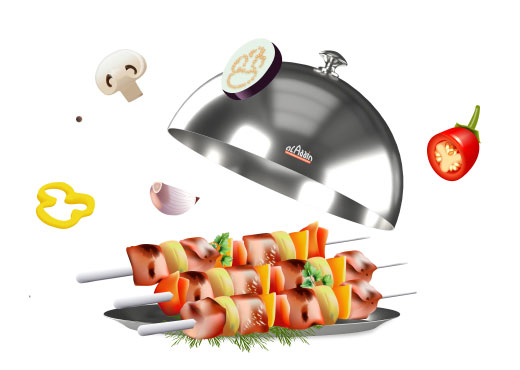Everyone and their cousin seem to be adapting the Mediterranean diet nowadays, and understandably so. In recent years, this dietary regimen has been revered for its array of health perks. It boasts cardiovascular benefits, improvement in cognitive functioning, gastrointestinal health, and more. Chock full of vegetables, healthy fats, and the periodic seafood and glass of wine, this diet really sounds like it has everything covered.
All these benefits sound fantastic, but what if you don’t eat meat? Is there room for vegetarians and vegans to enjoy the Mediterranean diet? Fortunately for you, the answer to this is a resounding yes. This eating plan is flexible enough to be adapted to the vegan or vegetarian lifestyle. And we’ll show you how in this article.
Adapting the Mediterranean Diet for Vegetarians and Vegans
Contrary to popular belief, adapting the Mediterranean diet is not all about pasta and beans. Rather, it comprises a healthy selection of food groups that include veggies, fruits, nuts, legumes, healthy fats, herbs, and spices. Important to note, though, is that it also advocates for moderate consumption of fish and meat.
Now, some individuals like to classify themselves as “flexitarians,” which means they’re semi-vegetarians. This simply means that they consume meat every once in a while. For such, they can follow the Mediterranean diet as is since it already recommends minimal consumption of animal-based protein.
For the purpose of this article, we will focus on adapting this regimen to the stricter vegan and vegetarian lifestyles. Achieving this goal is a bit more complex as it eliminates the consumption of meat entirely. The three diets we will highlight are:
- Lacto-ovo vegetarian – this is the kind of vegetarian who consumes plant-based foods as well as dairy products. However, they don’t consume meat.
- Vegans – these individuals follow a plant-based diet exclusively, with zero consumption of meat and dairy.
- Pescatarian – in addition to plant-based foods, the Pescatarian lifestyle also allows seafood consumption.
Adaptation Hacks and Main Nutrients to Consider
The fact that the vegetarian and vegan diets eliminate meat- be it red meat or seafood automatically reduces their nutritional profile.
The challenge, then, is to find healthy substitutes that offer the same level of nutrients (if not more) and are acceptable in the Mediterranean regimen. So, in this next section, we’ll examine different nutrients and ways to obtain them on a vegan or vegetarian Mediterranean diet:
Look for Complete Protein
The one nutrient that many vegetarians and vegans worry about is protein, and rightly so. The greatest benefit of animal-based foods is that they offer complete protein.
By now, you’re probably wondering about the meaning of complete protein. Here’s the deal: our bodies need about 20 different kinds of amino acids. Physiologically, the body can only make 11 of these (the non-essential amino acids). This leaves us to get the other 9 from food.
Most animal proteins contain all nine essential amino acids, which is why they’re described as complete proteins. Plant-based proteins, however, lack one or more of the essential amino acids, hence the name incomplete proteins.
If you’re switching to a vegan or vegetarian Mediterranean diet, you should be keen to add plant-based foods that offer complete proteins. These include:
- Soy products, such as edamame (soybeans), tofu, miso, tempeh and soy sauce
- Chia seeds
- Hemp seeds
- Select grains like quinoa, amaranth and buckwheat
- Sea vegetables such as spirulina
Try to incorporate these plant proteins regularly when preparing your Mediterranean diet. For lacto-ovo vegetarians, you can get complete proteins through dairy and eggs.
Greek yogurt, goat milk, goat cheese, and kefir are particularly rich in this nutrient. The beauty of this approach is that even vegans can opt for plant-based dairy, such as soy milk, almond milk, plant-based cheeses, and yogurts.
Pescatarians have a wider range of options as seafood is generally high in protein. And the good thing is the Mediterranean diet promotes occasional seafood consumption, such as:
- Shellfish – this includes clams, crab, oysters and lobster
- Tuna
- SMASH fish that is, sardines, mackerel, anchovies, salmon, and herring
- Seabass
- Octopus and squid
Mix and Match Incomplete Proteins
As explained earlier, vegetarians and vegans don’t have a ton of proteinous options due to their restriction of meat.
On the other hand, consuming the same plant-based proteins can become boring pretty quickly. So, one way to expand your options is to mix and match different incomplete proteins. Here are a few ideas to nail this:
- Combine seeds or nuts with whole grains, e.g., applying peanut butter on a whole wheat toasted bread
- Combine whole grains with your preferred type of beans, e.g., whole grain rice with beans, bean-based chili served with crackers.
- Combine legumes with nuts or seeds.
Omega-3 Fatty Acids
Another challenge vegans and vegetarians might encounter when following the Mediterranean diet is getting Omega-3 fatty acids.
Certain types of fatty acids are easy to get from plant-based Mediterranean foods. In particular, I’m referring to Alpha-Linolenic Acid (ALA) fatty acid, which reduces the risk of cardiovascular diseases. Foods such as beans, walnuts, flax seeds, and chia seeds contain copious amounts of this nutrient.
Unfortunately, vegan and vegetarian Mediterranean diets contain significantly lower amounts of other fatty acids, specifically, eicosapentaenoic Acid (EPA) and docosahexaenoic acid (DHA). These fatty acids exist abundantly in seafood and goods. This means that lacto-ovo vegetarians and pescatarians are covered.
However, if you’re following a strict vegan Mediterranean diet, you will have to look for substitutes. In this case, I’d recommend sea vegetables like spirulina and nori. But even then, sea veggies contain just tiny amounts of these fatty acids. So, to avoid deficiencies, consider supplementing with algae oils and foods fortified with EPA and DHA.
Iron
Whether vegan or vegetarian, working iron into your diet is relatively easy. This is because the majority of vegetables and fruits are rich in iron. The only challenge is that most of these plant-based foods also contain a compound known as phytic acid.
Phytic acid is classified as an antinutrient, making it harder for the body to absorb iron and other nutrients. The trick to overcoming this absorption-blocking effect is to prepare your meals differently. Specifically, try these processes:
- Boiling – boiling legumes like lentils and beans also helps to eliminate the anti-nutrient
- Sprouting – it’s the act of soaking legumes and whole seeds- like chickpeas- in water till they form a tail-like protrusion. This process gets rid of toxins like phytic acid and saponins.
Now that you know how to maximize iron absorption, here’s a list of vegan/vegetarian Mediterranean foods rich in this nutrient:
- Lentils
- Different varieties of beans, like kidney beans and white beans
- Soybeans – they provide a whopping 55% of the recommended daily intake of iron
- Soy products like tofu and tempeh
- Nuts, particularly cashew, and pine nuts
- Leafy greens like spinach, kale and Swiss chard
Incorporating Local Foods and Tradition
The Mediterranean diet is not only about the food you eat. Sure, this is the main thing that it’s praised for. In reality, though, it’s so much more than that. It’s also about the practices you adopt to maintain a healthy lifestyle. These include:
Using locally-available foods
At its core, the Mediterranean diet is fairly simple and versatile. You don’t have to search far and wide for the right ingredients.
You can use locally-produced foods as long as they adhere to vegan/vegetarian and Mediterranean principles. For instance, if you cannot access vegan cheeses and yogurts, you can go for plant-based milks like almond or soy, which are readily available.
Incorporate movement into your routine
Another aspect vital to the Mediterranean lifestyle is exercising regularly. Medical experts recommend getting at least 150 minutes of moderate activity weekly.
This doesn’t necessarily mean that you set time aside to exercise. In fact, if your schedule is anything like mine, it’s always jam-packed. So, the secret is to integrate movement into everyday activities. You can take your dog for an evening walk, cycle when running errands, or walk to get your lunch instead of having it delivered.
Vegan/ Vegetarian Mediterranean Meal Plan
The information above will guide you when choosing foods to include in your vegan/ vegetarian Mediterranean diet. But to help you get started on the right path, here’s a meal plan example for a day:
Breakfast
- Greek yogurt with a side of granola topped with your favorite berries.
- A bowl of oatmeal or overnight oats with strawberries
- Whole grain toast with hummus
- A tofu scramble
Lunch
- A no-tuna salad served on crispy pitta bread with olives, lettuce, and tomatoes.
- Roasted vegetables and brown rice bowl
- Instant pot vegetable soup
Dinner
- Basil-fried cauliflower rice and tofu
- Mediterranean quinoa salad bowl
- Quinoa sushi bowls and tofu
- Sweet potato and black bean chili
- Meatless vegan tacos
- Vegan Shepherd’s pie
Snacks
- Strawberry salsa
- Mixed fruits bowl
- Nuts
- Classic Bruschetta
FAQs
Is the Mediterranean diet suitable for vegetarians?
Yes, the Mediterranean diet is highly suitable for vegetarians as it emphasizes fruits, vegetables, whole grains, legumes, nuts, and seeds. Vegetarians can easily meet their protein needs through legumes, nuts, seeds, and dairy products common in Mediterranean cuisine.
Can I follow the Mediterranean diet on a budget?
Absolutely. The Mediterranean diet can be budget-friendly by focusing on seasonal produce, buying in bulk, and minimizing meat consumption. Utilizing pantry staples like beans and lentils also helps reduce costs while adhering to the diet’s principles.
How can I adapt the Mediterranean diet if I’m gluten-free?
Adapting the Mediterranean diet for a gluten-free lifestyle is straightforward. Replace traditional wheat-based products with gluten-free grains such as quinoa, rice, millet, and buckwheat, which are all compatible with Mediterranean recipes.
How can I follow the Mediterranean diet if I don’t like fish?
If you’re not a fan of fish, you can still follow the Mediterranean diet by incorporating other sources of lean protein and omega-3 fatty acids. Options include lean poultry, legumes, nuts, seeds (like chia and flaxseeds), and omega-3 enriched eggs.
Is it possible to eat out and still follow the Mediterranean diet?
Eating out and sticking to the Mediterranean diet is definitely possible. Opt for dishes rich in vegetables, whole grains, and lean proteins. Many restaurants offer salads, grilled fish, or vegetable-based dishes that fit within the Mediterranean diet framework. Requesting olive oil and vinegar as a dressing on the side is another way to adhere to the diet’s guidelines while dining out.
Conclusion
Adhering to certain types of diets can be difficult. So, when you think of customizing the Mediterranean diet to fit your vegan or vegetarian lifestyle, it might feel like trying to squeeze water out of a stone.
However, incorporating Mediterranean practices into your routine is fairly easy. This is particularly because both regimens emphasize plant-based food sources. You’ll just have to tweak your diet slightly to ensure you’re getting all essential nutrients, especially those that tend to be low in the vegan and vegetarian diets.



